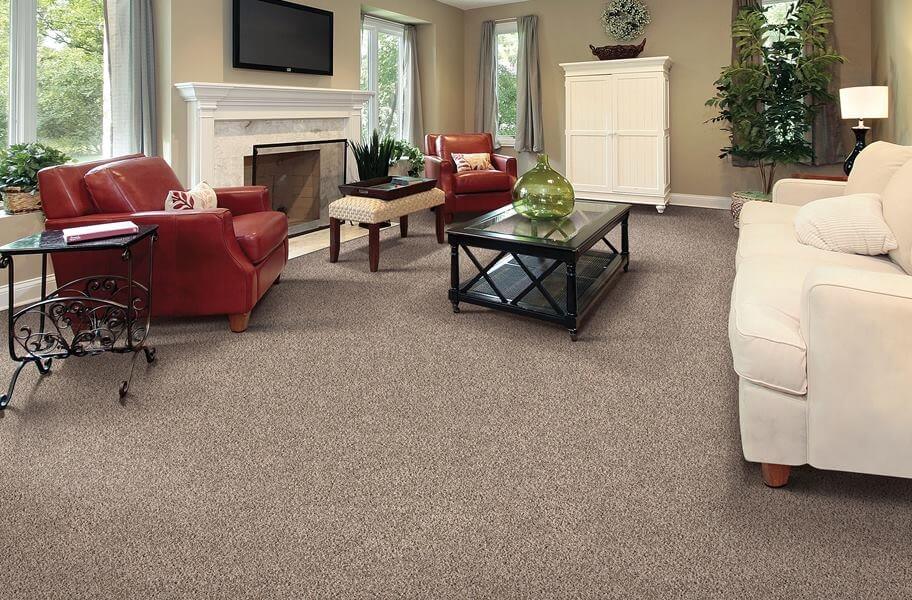When it comes to home décor, carpet are often chosen for their visual appeal. From luxurious textures to vibrant patterns, carpets undeniably transform a room’s aesthetics. However, their impact goes far beyond looks. Carpets play a crucial role in enhancing comfort, improving acoustics, and creating a cozy, inviting environment. For homeowners seeking both style and functionality, understanding these benefits can elevate interior design to a whole new level.
The Comfort Factor: Why Carpets Make a Difference
Walking barefoot on a soft, plush carpet is an experience that instantly conveys comfort. Unlike hard flooring options such as tiles or hardwood, carpets provide a gentle cushioning effect underfoot. This is particularly beneficial in areas where you spend long periods standing, like the living room or kitchen.
Additionally, carpets contribute to a sense of warmth in a room. They act as natural insulators, retaining heat during colder months. This not only makes your home feel cozier but can also reduce energy bills by minimizing heat loss. In bedrooms, a soft carpet underfoot enhances relaxation and creates a welcoming environment for restful sleep.
Even in high-traffic areas, modern carpets are designed for durability while maintaining comfort. Materials such as wool, nylon, and polyester blend resilience with softness, ensuring that comfort is never compromised for practicality.
Acoustics Matter: How Carpets Reduce Noise
One of the most underrated benefits of carpets is their ability to improve a room’s acoustics. Hard surfaces like wood, marble, or tiles reflect sound waves, often creating echoes and amplifying noise. This can make spaces feel harsh, especially in open-plan living areas.
Carpets, however, act as sound absorbers. The fibers trap and dampen sound waves, reducing noise levels and preventing echoes. This is particularly advantageous in multi-story homes where footsteps can travel through floors or in apartments where minimizing noise pollution is essential.
By strategically placing carpets in key areas, you can create a quieter, more peaceful environment. Living rooms, media rooms, and bedrooms benefit the most from this acoustic improvement. A soft carpet can transform a noisy household into a serene haven, enhancing the overall comfort of your home.
Choosing the Right Carpet for Comfort and Acoustics
Not all carpets are created equal, and selecting the right one depends on your specific needs. For maximum comfort, plush or frieze carpets with thicker piles are ideal. These not only feel luxurious underfoot but also provide better thermal insulation and sound absorption.
For acoustic benefits, consider carpets with dense fibers. Wool carpets are particularly effective because the natural crimp of wool fibers traps air, improving both insulation and soundproofing. Additionally, carpet padding plays a significant role. Investing in high-quality underlay enhances both softness and noise reduction, making a noticeable difference in comfort and acoustics.
Color and pattern selection also affects the perception of comfort. Warm tones and subtle textures create a cozy ambiance, while lighter shades can make a space feel airy yet still comfortable underfoot. Combining aesthetic appeal with functionality ensures that your carpet complements your home’s décor while enhancing overall comfort.
Carpets and Indoor Well-being
Beyond physical comfort and noise reduction, carpets contribute to psychological well-being. Soft surfaces and warm textures create an inviting atmosphere that encourages relaxation and social interaction. Children and pets particularly benefit from carpeted areas, which provide safe, cushioned spaces for play.
Carpets also influence spatial perception. A well-chosen carpet can define zones in open-plan homes, subtly separating areas without the need for walls. This functional aspect improves flow and creates a sense of structure, enhancing comfort at a subconscious level.
Maintenance Tips to Maximize Benefits
To enjoy long-lasting comfort and acoustic benefits, proper carpet maintenance is essential. Regular vacuuming prevents dust and allergens from accumulating, maintaining both cleanliness and the soft texture of fibers. Deep cleaning every 12–18 months helps remove embedded dirt and preserves the carpet’s insulating and noise-dampening properties.
Additionally, rotating carpets in high-traffic areas prevents uneven wear, ensuring that comfort and aesthetics remain consistent throughout your home. Using rugs or runners in frequently used spaces can also extend the life of your carpets while maintaining acoustic benefits.
Conclusion
Carpet Abu dhabi are far more than decorative elements; they are key contributors to a home’s comfort, warmth, and acoustic quality. By absorbing sound, providing cushioning, and creating inviting spaces, they enhance both physical and psychological well-being. Choosing the right carpet—considering materials, pile density, and underlay—can transform your living spaces into havens of comfort and tranquility.

